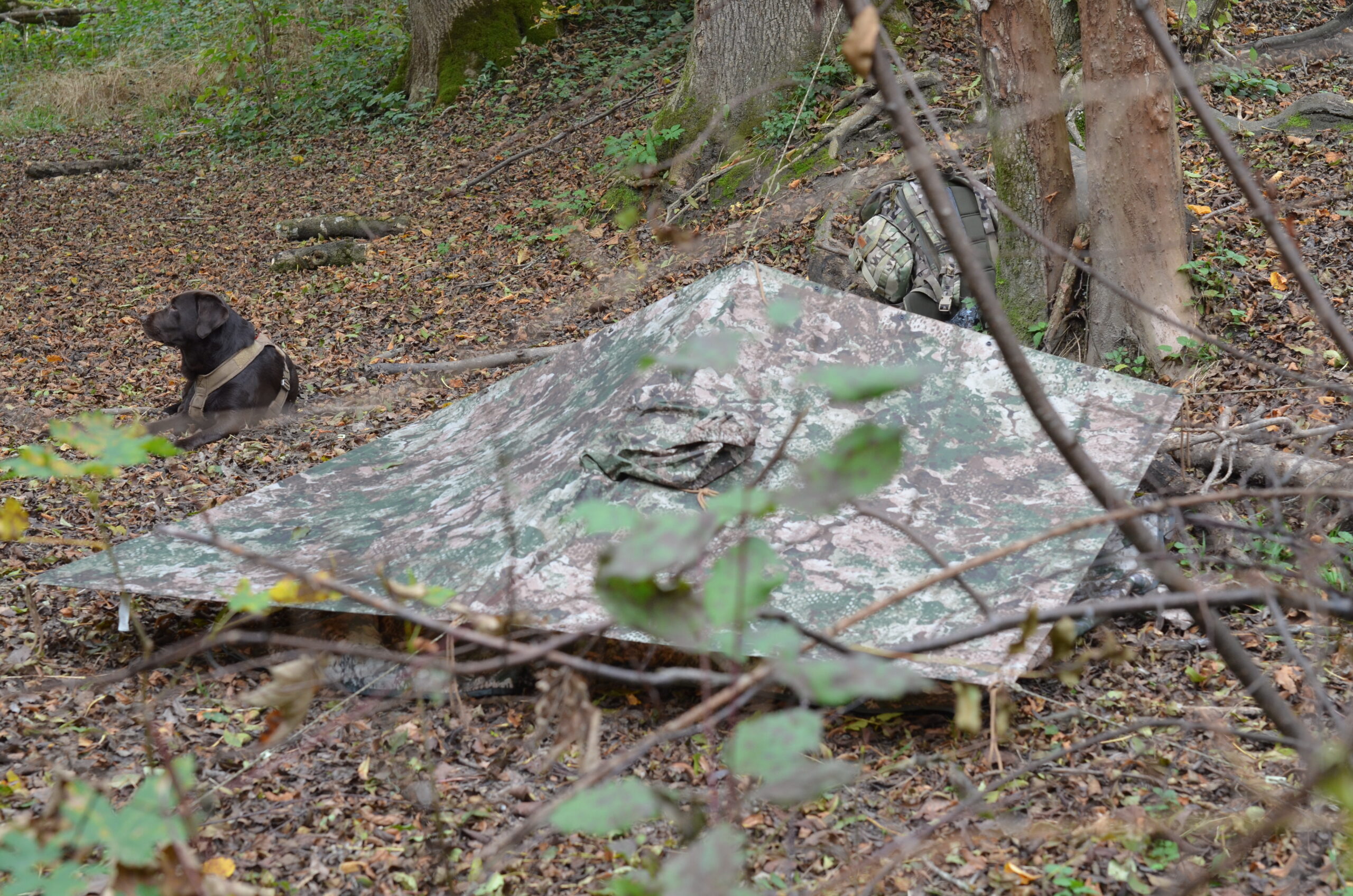I carry a poncho with me almost all the time. It’s such a versatile piece of gear that I don’t want to miss it when I need it. And a poncho liner a.k.a. woobie is the perfect add-on. So when I heard that there will be both available in one of my favorite camo patterns, PhantomLeaf WASP I, I couldn’t wait to lay my hands on them.
In fact I like these two pieces of gear so much I wrote overview posts about ponchos and woobies in the past. I got my ponchos and my woobie at Perunika.
Overview
When reviewing widely used designs like that of a poncho and a woobie it’s all about the details. You can’t just reinvent the poncho so it’s more about how you make the best of it.
Poncho
The design follows the lines of the classic “G.I. poncho”. Meaning you can lay the poncho flat like a tarp. It even has grommets so you can mount it with paracord or similar strings. At the center there’s a hole for your head with a hood attached. If you close the drawstring of the hood the hole is more or less closed.
On two sides of the tarp there are snap buttons which you can use to fold and close the sides. This way you get the typical poncho shape with the hood on top. At the center of these edges there are grommets, too. The grommets sit right below your shoulders when you wear the poncho. When you use it as a tarp they help with setting up lines.
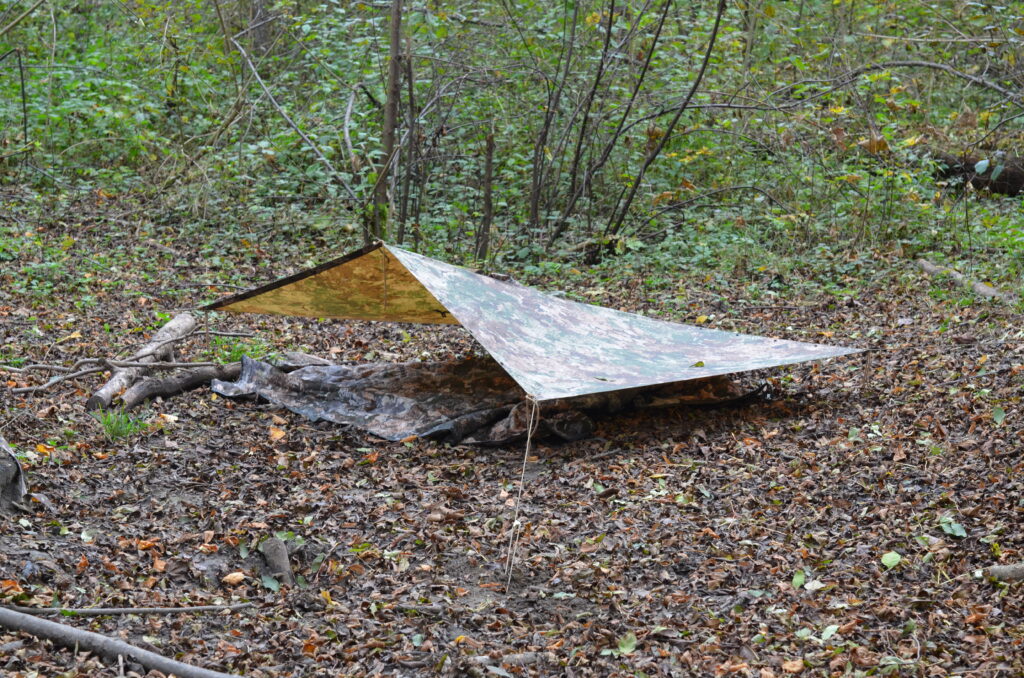
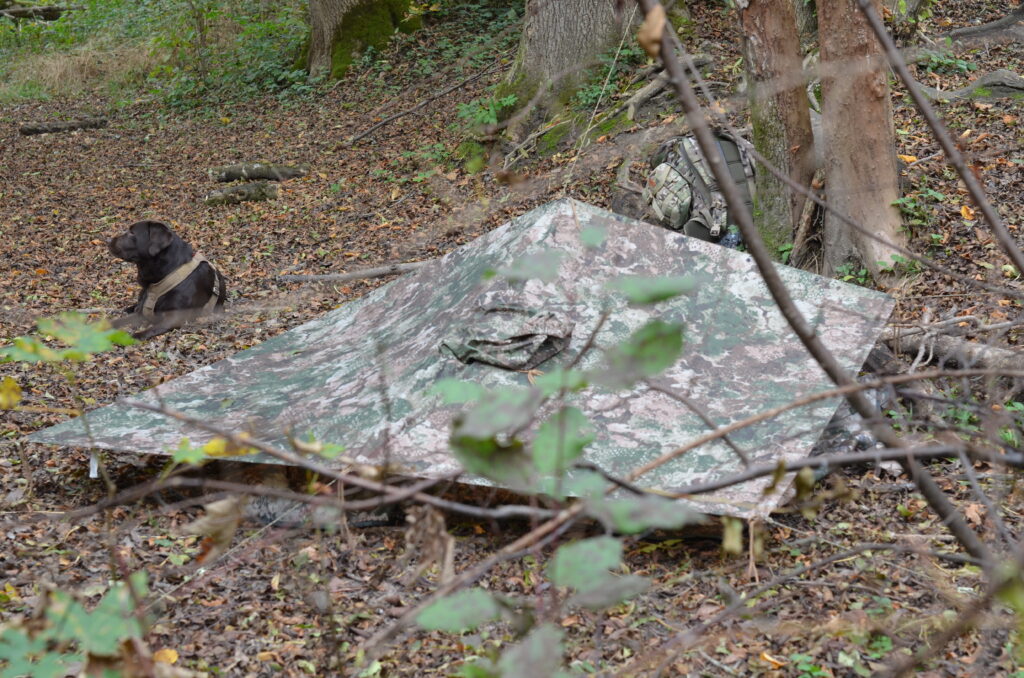

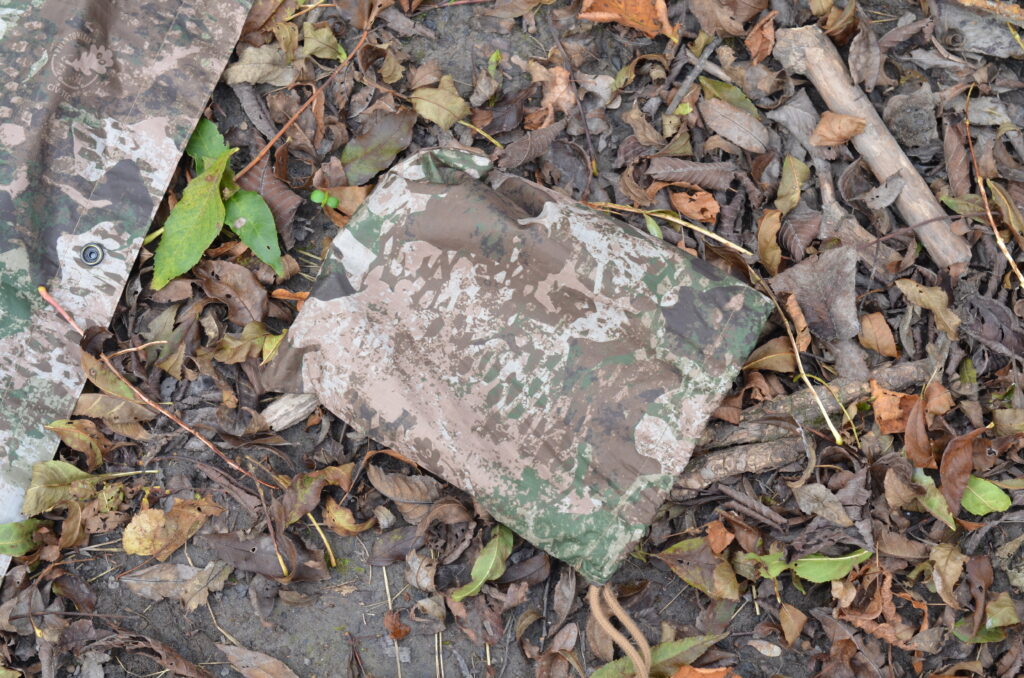
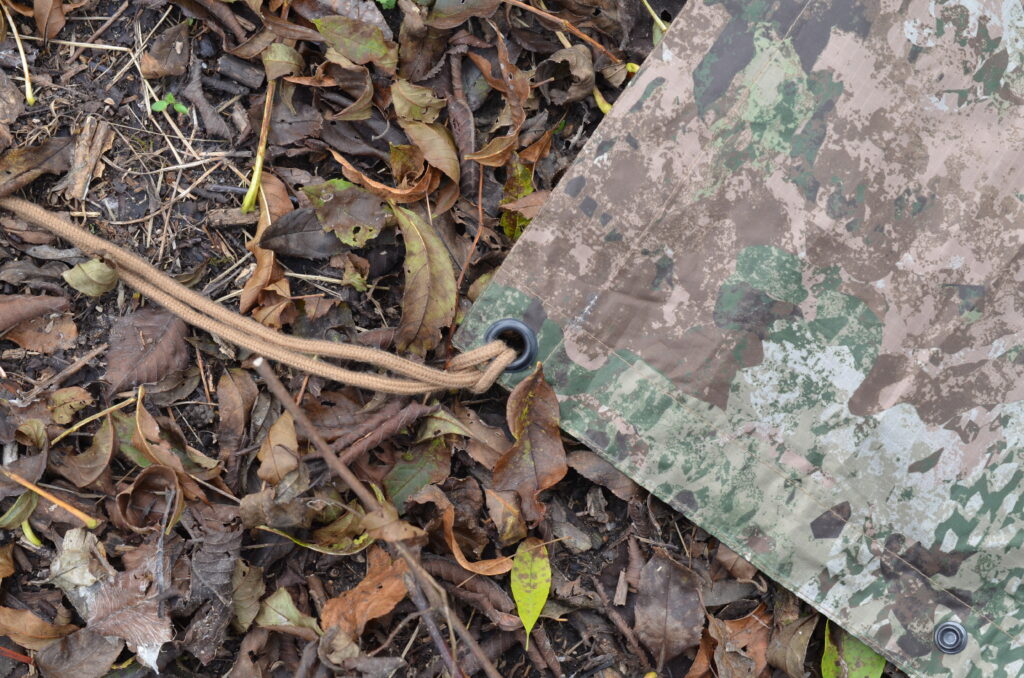
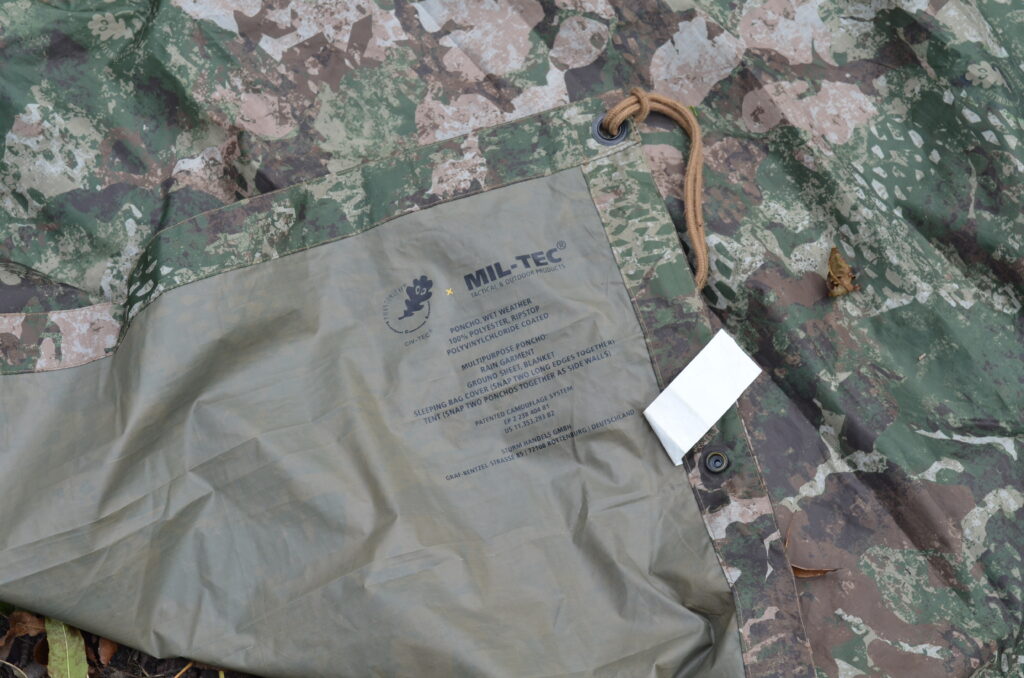
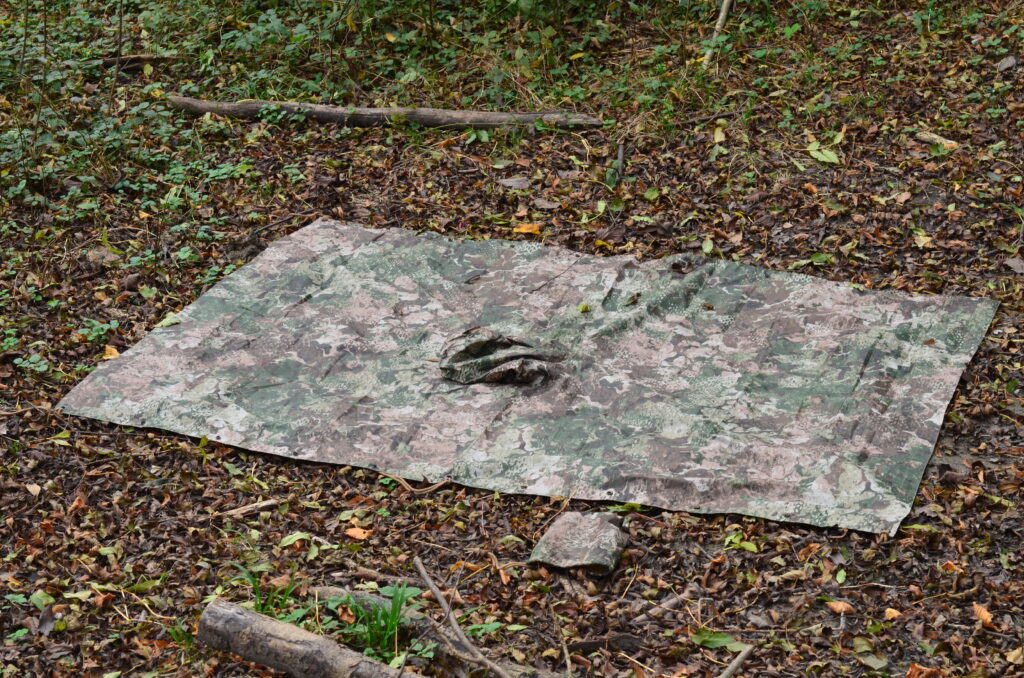
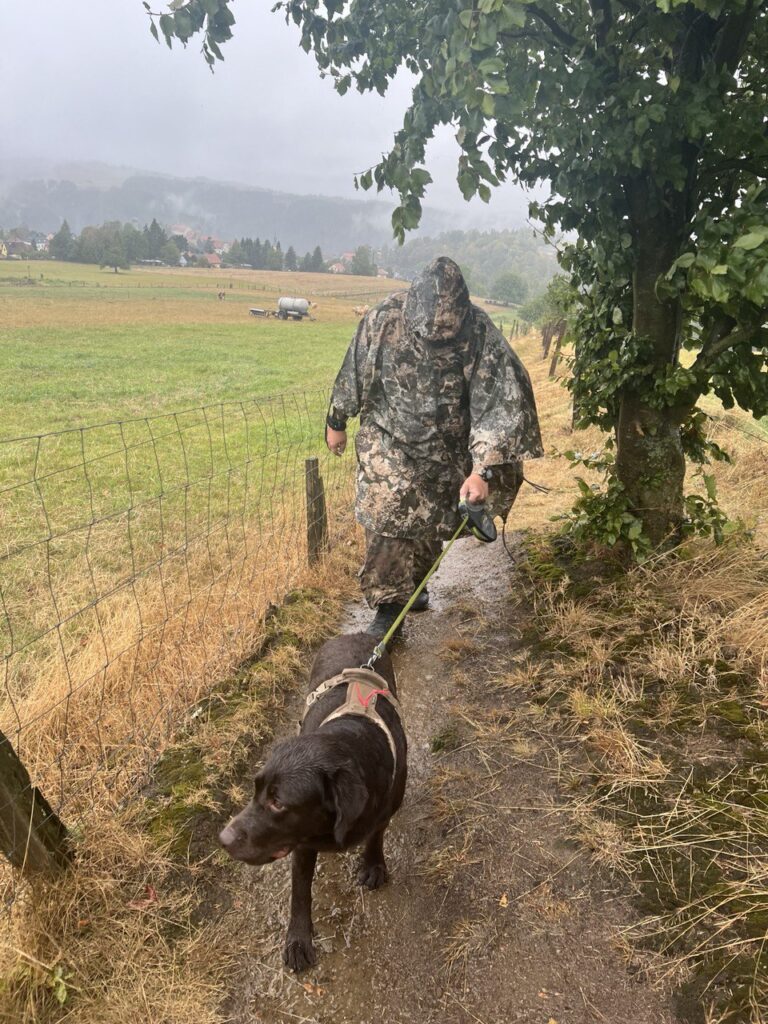
You can use the grommets and snap buttons to combine two ponchos to a bigger tarp.
The poncho comes with several strings already attached. In the grommets there are strings that remind of thick shoe laces mounted with larks head knots. They are fairly large and can be enough to mount the poncho in tarp mode. Also there’s a very long string attached to two smaller grommets that ride on the inside around your lower frontal rib cage when in poncho mode. This string can be run around your chest to keep the poncho from flying when you’re wearing it in heavy winds.
The poncho is, like most modern ponchos, made of polyester. Other than many other ponchos it has polyvinyl chlorine coating on the inside. This coating makes the poncho more reliably water proof and helps with blocking light. A downside is that it makes the poncho significantly heavier.
The poncho comes in a stuff sack made out of the same material. Compared to other ponchos I own, it’s more like a ball, not like a roll when filled. That’s neither good nor bad you just need to keep it in mind when packing. Because the poncho is quite stiff due to it’s coating you should fold and roll it before putting it in the bag.
Woobie
A woobie, also called poncho liner, is a blanket that fits into the poncho and can be connected to it. If you open the poncho to tarp mode and add the woobie you can wrap yourself in both and have a makeshift bivouac. The woobie has straps that align with the grommets so you can tie it in easily.

If not using in conjunction with the poncho the woobie is basically a blanket with strings on it’s edges.
The woobie is also made of polyester. This proven material will keep you warm and will still provide moisture wicking and breathability (as long as you don’t cover it with the poncho, of course). Just remember that polyester doesn’t go well with flames and embers.
The woobie comes in a spacious compression bag that has a relatively long roll shape. This helps with mounting it on a backpack without taking too much space.
Camo pattern
As I said in the introduction, the PhantomLeaf family of camouflage patterns is one of my favorites. Not only because of it’s looks and scientific background but also because it’s extremely effective.
PhantomLeaf offers several different patterns but only a few of them (right now only the WASP family) are licensed for civilian use. WASP I was specifically made for their cooperation with Mil-Tec. Together they started a new line of gear called Civ-Tec where every item shows the PhantomLeaf WASP I pattern.
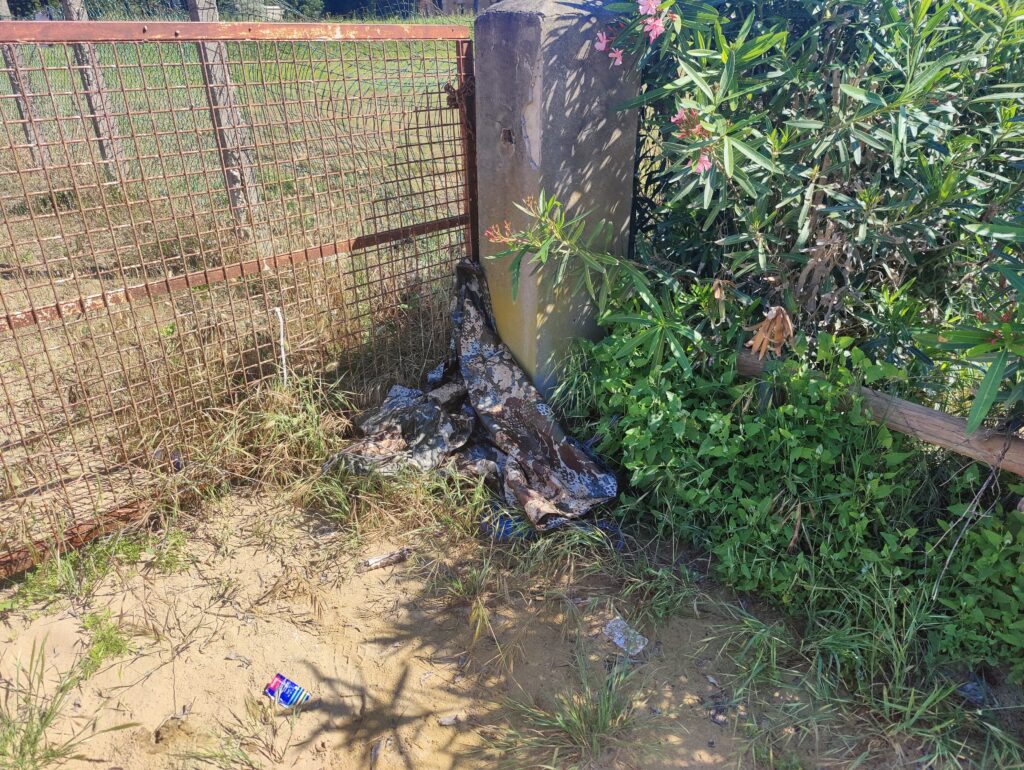

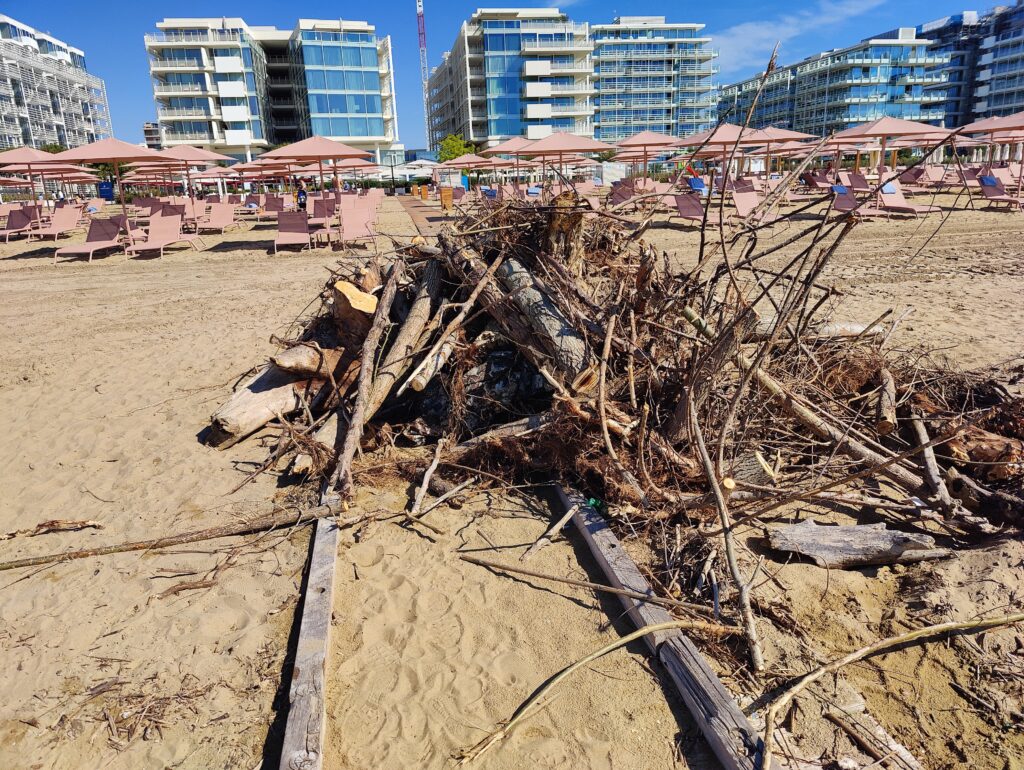

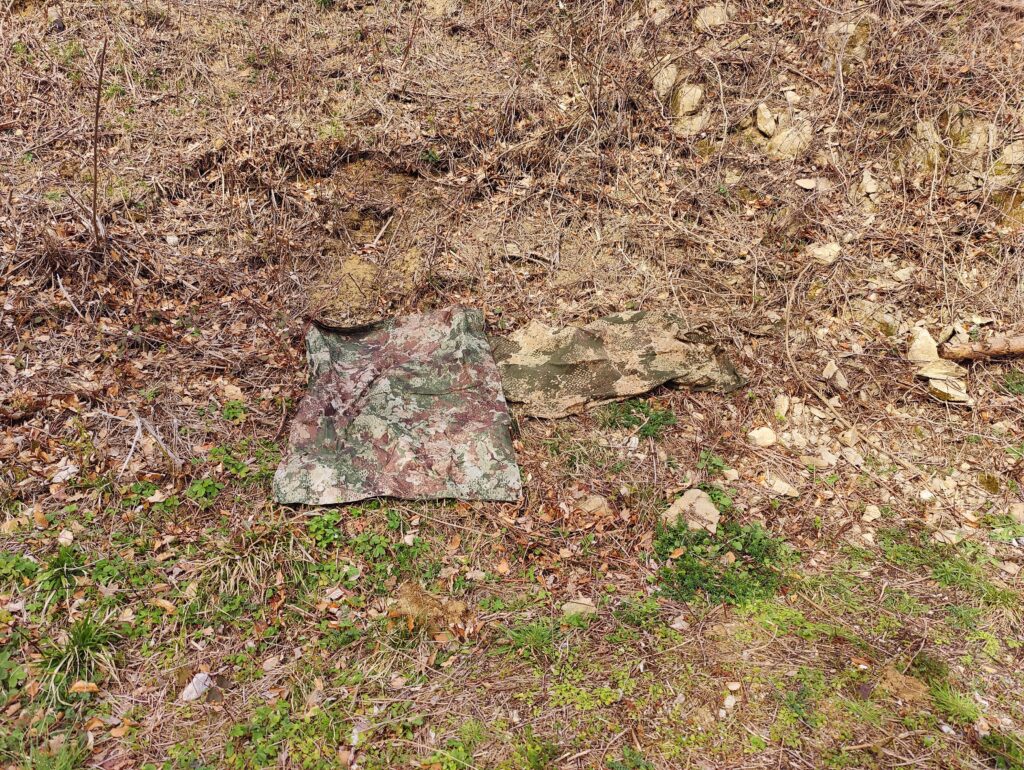
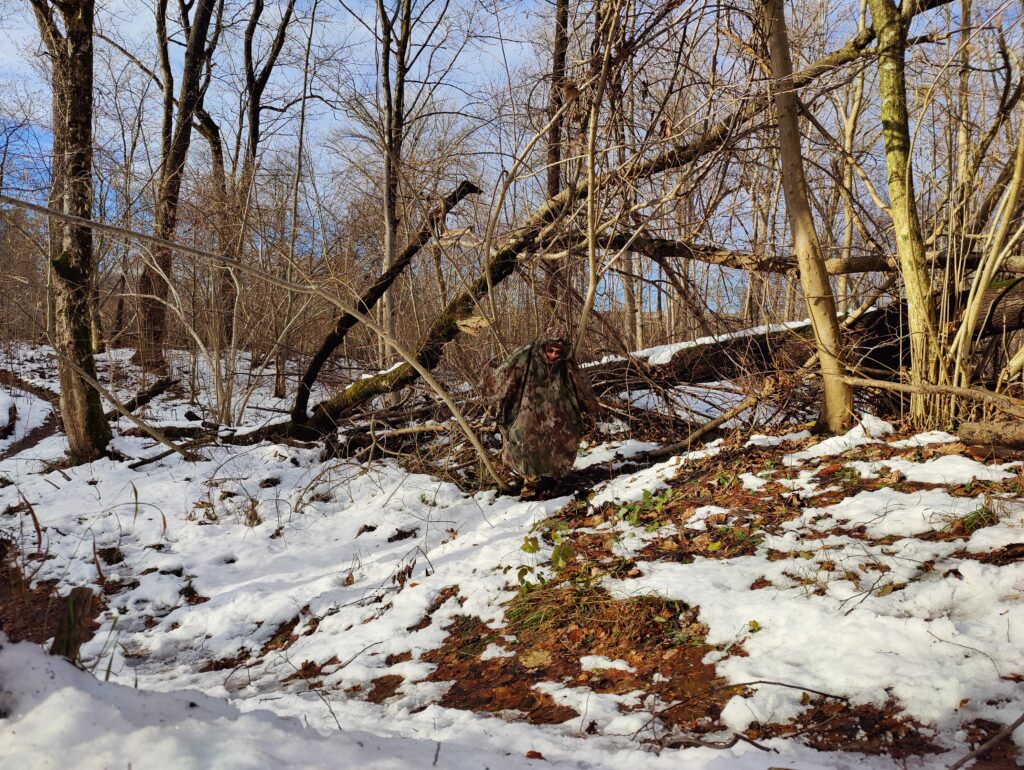
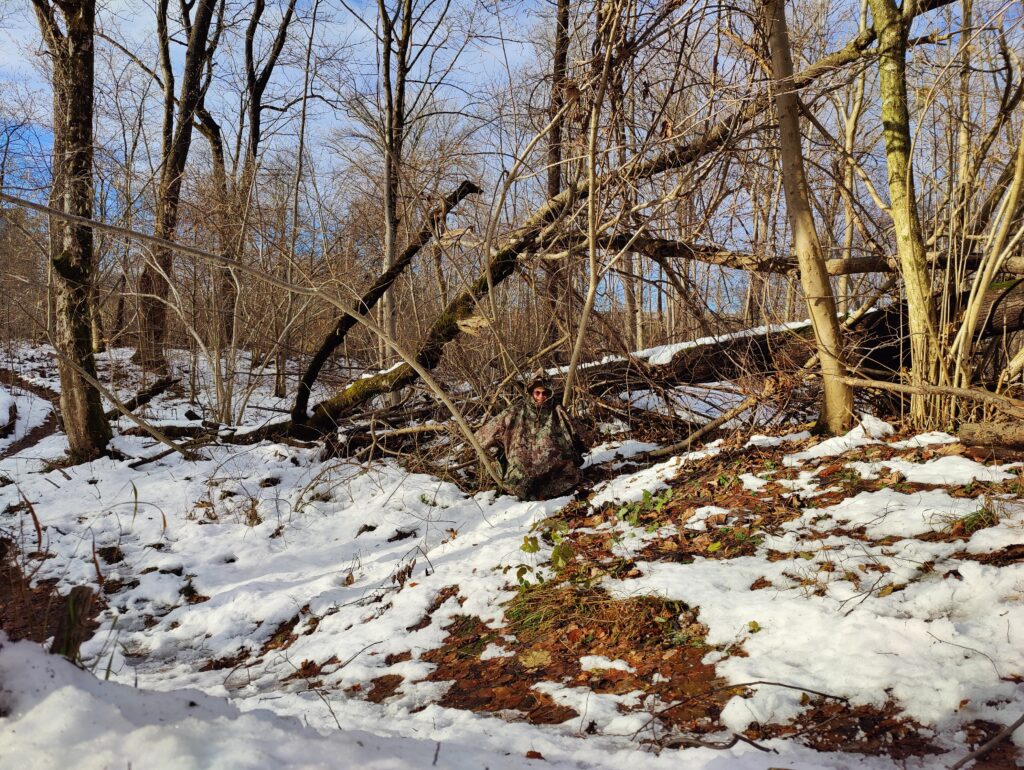


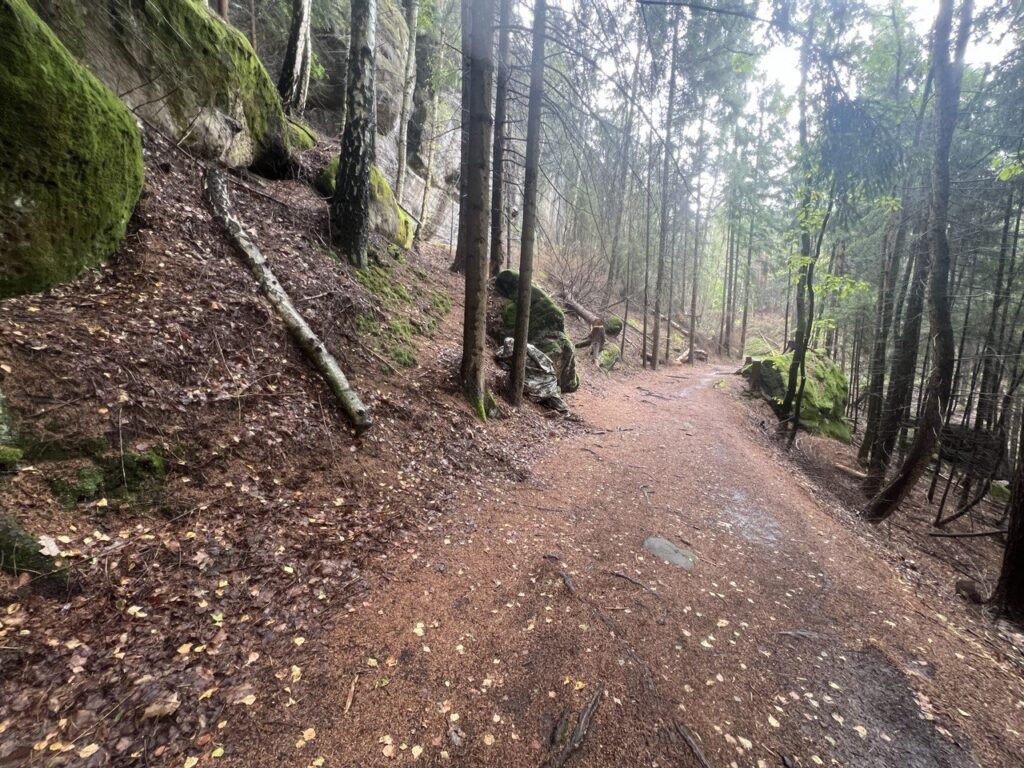
WASP I defines how the shapes are scattered over the surface. There are several different color variants available for different environments. The two I tested are Z1b (rocky desert) and Z2 (low growing vegetation).
PhantomLeaf deserves it’s own post about the scientific background. For now I want to say that it incorporates a mix of optical illusions and mini-, midi- and maxi patterns. It will effectively break every silhouette regardless of the distance to the viewer. Other patterns tend to “blob” meaning that the shapes merge into one unicolor surface when the viewer is too far away. Or you can clearly see the shapes when you’re too close. With WASP I tiny shapes that you can see up close will merge into new shapes when you move away. And these will again merge into new shapes when going even farther. In fact, sometimes it’s hard to tell what color and shape you see when looking at your own gear!
The Review
That was the overview. Now to what I think of the items.
Poncho
One of the things that sets this poncho aside is the coating. Personally I like it. I don’t care about a few grams extra but I love that it makes the poncho more reliably waterproof. I also like that it helps to block light. So you can use it in tarp mode as a sunshade and it will help with camouflage if you use a flashlight under the tarp. I had some ponchos from other brands fail me after prolonged use because their coating wore off. That didn’t happen to me with these so far.
The hood is quite wide. This helps when you’re using a helmet but it also leads to lots of slack when you’re not wearing anything on your head. The drawstring around the face opening has a simple locking mechanism. You can pull it so tight that you can nearly close the hole for your face. This helps when using the poncho as a tarp. Because the hood is very large it tends to fall over your eyes when wearing nothing on your head. That’s one negative point.
You can combine two ponchos to one bigger tarp using the grommets and the snap buttons, that’s a big plus. I haven’t tried it in the rain, yet so I can’t tell if the combination is good enough. Using the grommets it will definitely withstand some wind, though.
The string to lock the poncho around your chest is definitely long enough. Even for a big guy with heavy clothing, it’s no problem to wrap yourself.
When wearing the poncho you might need to open the uppermost pair of snap buttons so your arms aren’t stuck in the holes which basically leaves you running around like a T-Rex.
Rolling the poncho up and putting it back into the pack sack is easily done after a few training runs. The sack has ample space so you don’t have to force it in.
Woobie
I used the woobie for several weeks as a couch blanket. Yes, that’s not what it was meant for and it gets quite hot beneath it but I thought it might be a good way to test it’s everyday usability. With Ronja, our dog, hogging it and clawing into it there was also some stress test in for it. What can I say? I like it as a blanket. It’s big, it’s warm, it’s even a bit cozy when you’re ok with polyester.
Knotting it into the poncho is a breeze. The straps at the edges of the woobie are a bit thinner than the ones the poncho comes with. This makes it easier to route them through the grommets when the original are still in. I’m just wondering why the woobie has an extra pair of straps which do not align with grommets in the poncho.
The woobie has one huge drawback for me. There is no hole for your head. So you can’t wear it as a liner when you wear the poncho. I would gladly pay a few bucks more and have a decent opening that can be closed when you use it as a blanket. Given, the blanket works better without the hole, that’s a good reason. Still, being able to wear the combination of poncho and woobie would be a huge plus.
The Combination of poncho and woobie
I own a few poncho – woobie combinations so I want to set them in perspective. I like that this interpretation has slightly different focus points than the others. It’s a bit more minimalistic – I guess mostly to keep the price point low which really worked, especially with the woobie.
I don’t mean “minimalistic” like in badly made. It’s just that others tend to have more features like toggles instead of straps you have to knot yourself. Or extras like the option to wear the woobie like a warming poncho by itself. Or stuffing of high tech brands instead of plain polyester. This can be a good or a bad thing. On one hand you might miss a feature on the other hand less moving parts means less things that can break.
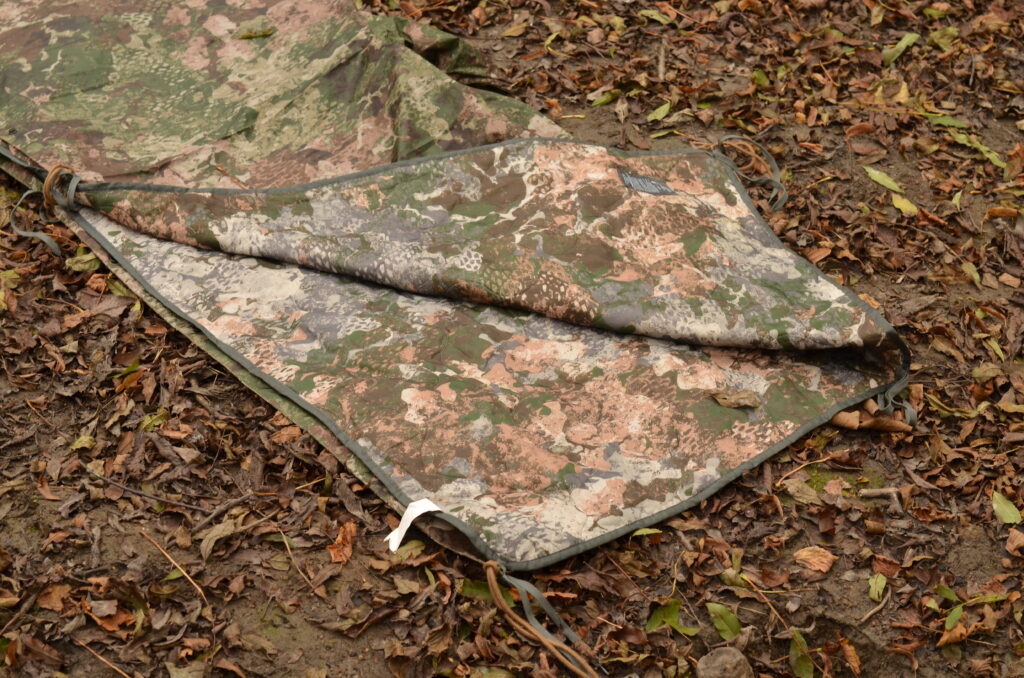

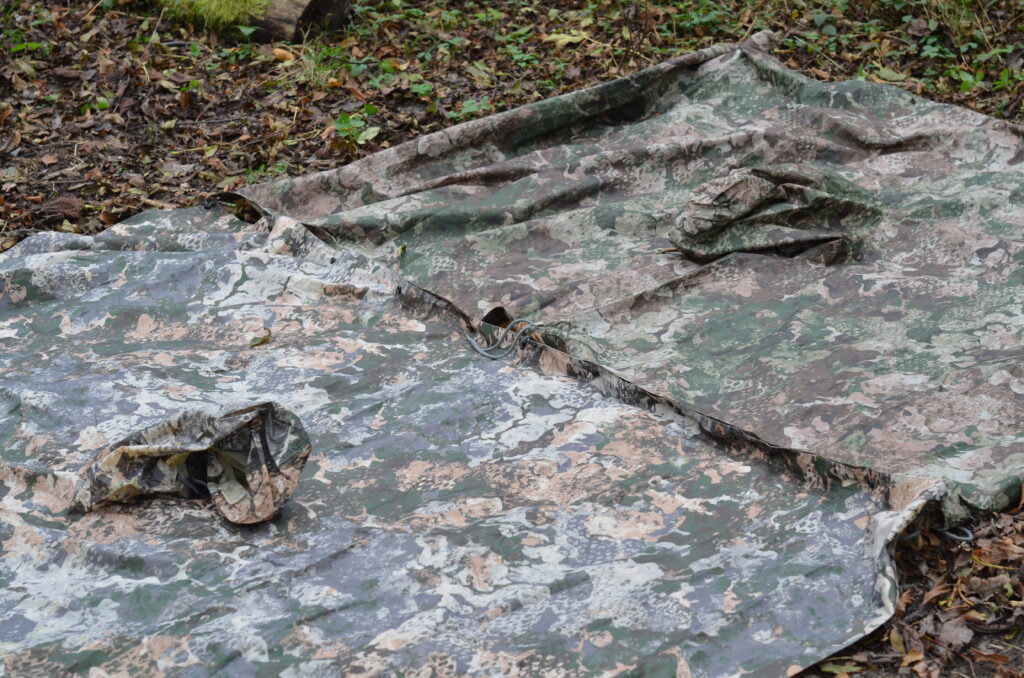
The coating of the poncho is a definite plus for me. I’m totally ok with a few grams extra when it’s really waterproof and better blocks light than others. Speaking of carry options: With the woobie coming with a stuff sack that makes a long “sausage” instead of a ball like others it’s definitely better to carry.
Wrapping yourself in the combination of poncho of woobie isn’t possible in all stances when you’re a big guy like me. I love to use it when I sit in a cold environment. But using it as a bivouac and wrap myself completely while sleeping wouldn’t work because of my circumference.
I personally bought the pieces because of the camo pattern. And PhantomLeaf just delivers. Even when I like WASP II better than WASP I, both just work. I tested it in a few situations not just by taking photos but asking friends to hide so I can search them. It’s just astonishing how well they work.
Summary
I really like the combination of poncho and woobie by Mil-Tec / Civ-Tec in PhantomLeaf WASP I camo pattern. I bought them mainly for the camouflage pattern. In the meantime the ponchos are the one of my collection I carry with me the most. And the woobie might miss a few features of other models but it still is a great blanket that works great with the ponchos.
When it’s really cold outside I might switch back to other brands because I really miss the feature to wear the poncho liner inside of the poncho.
I can’t say they are better than all other combinations I own but they are definitely not bad. The coating of the poncho, the camo pattern and the low price tag really make them an interesting choice.
